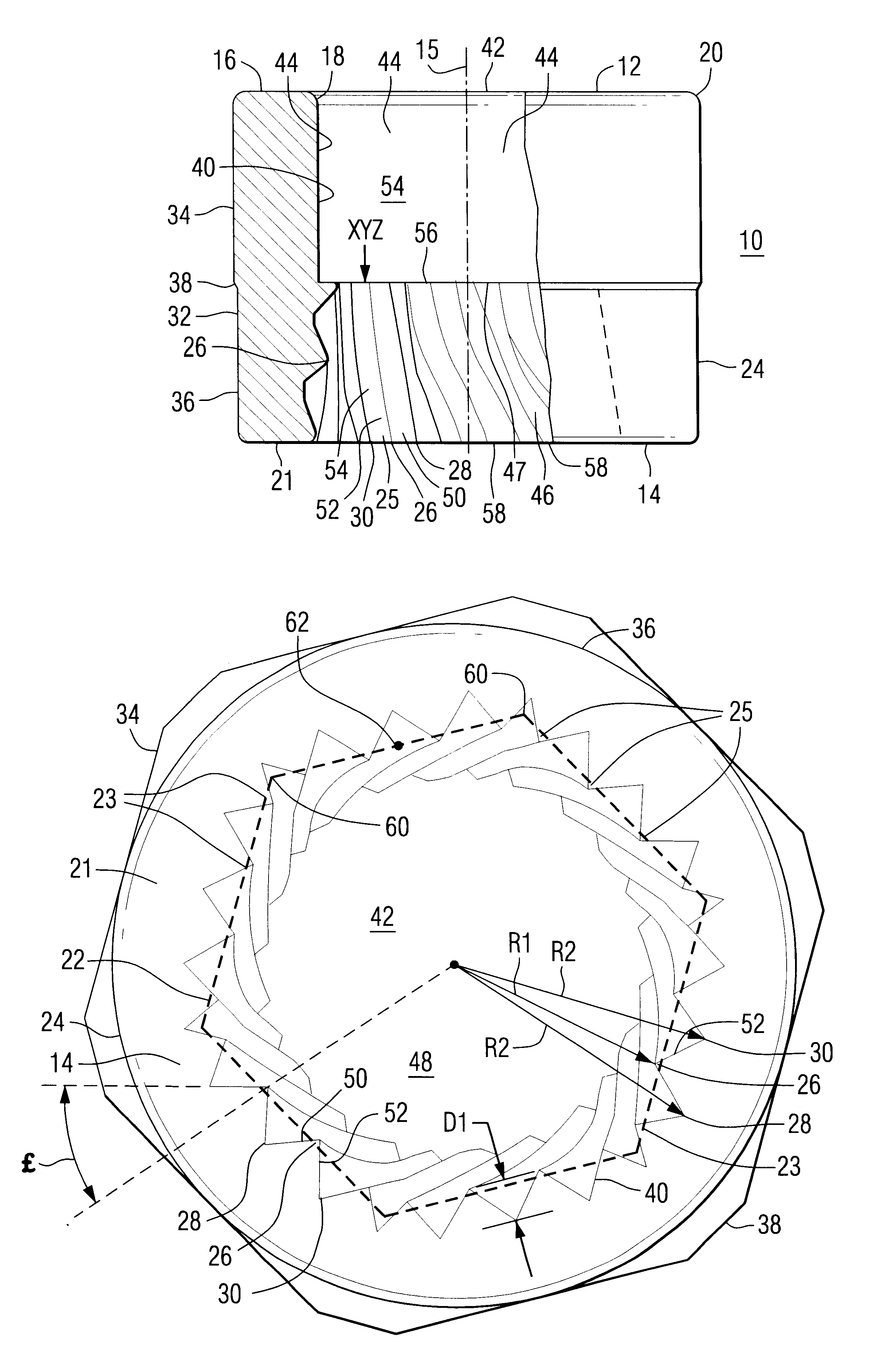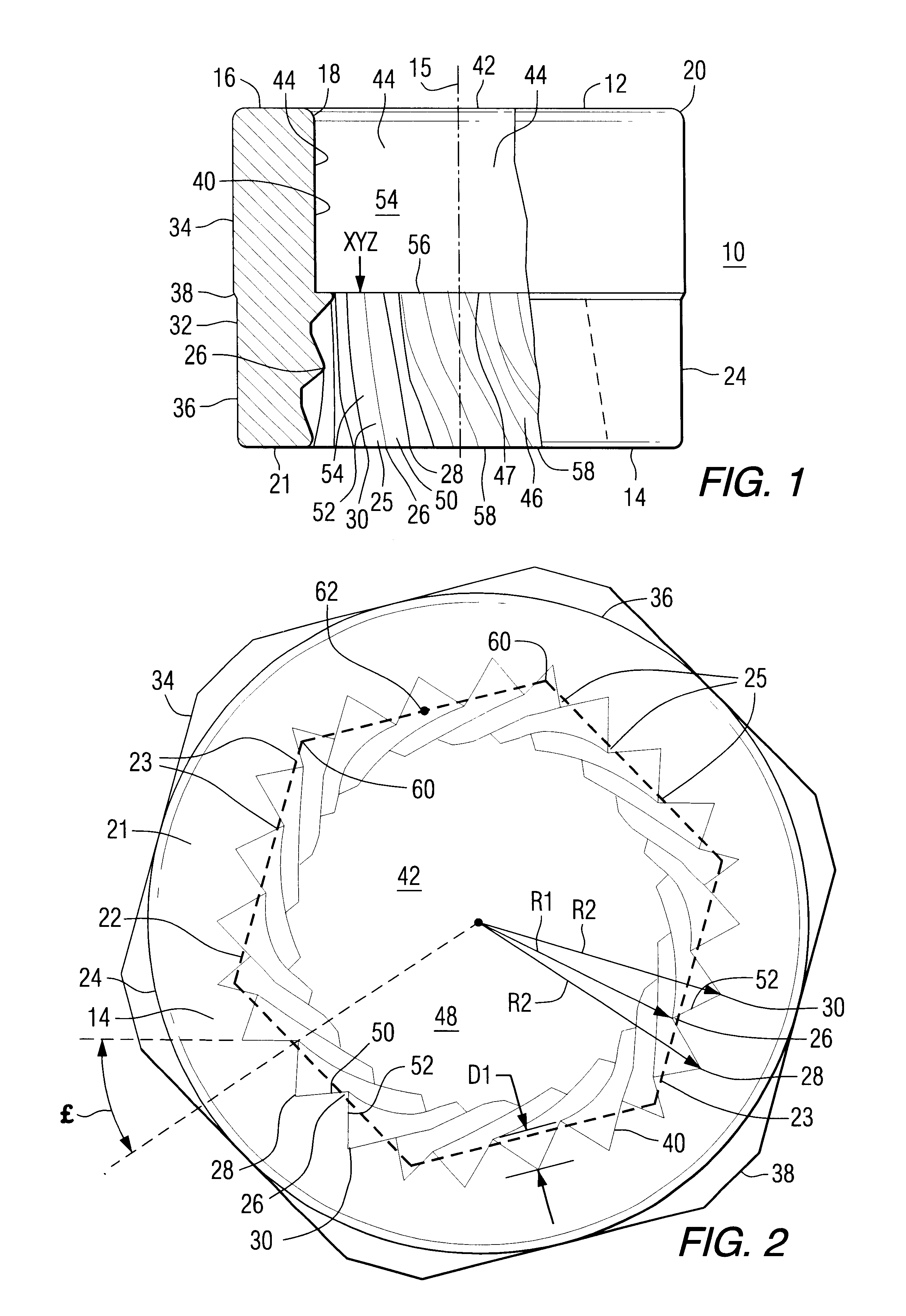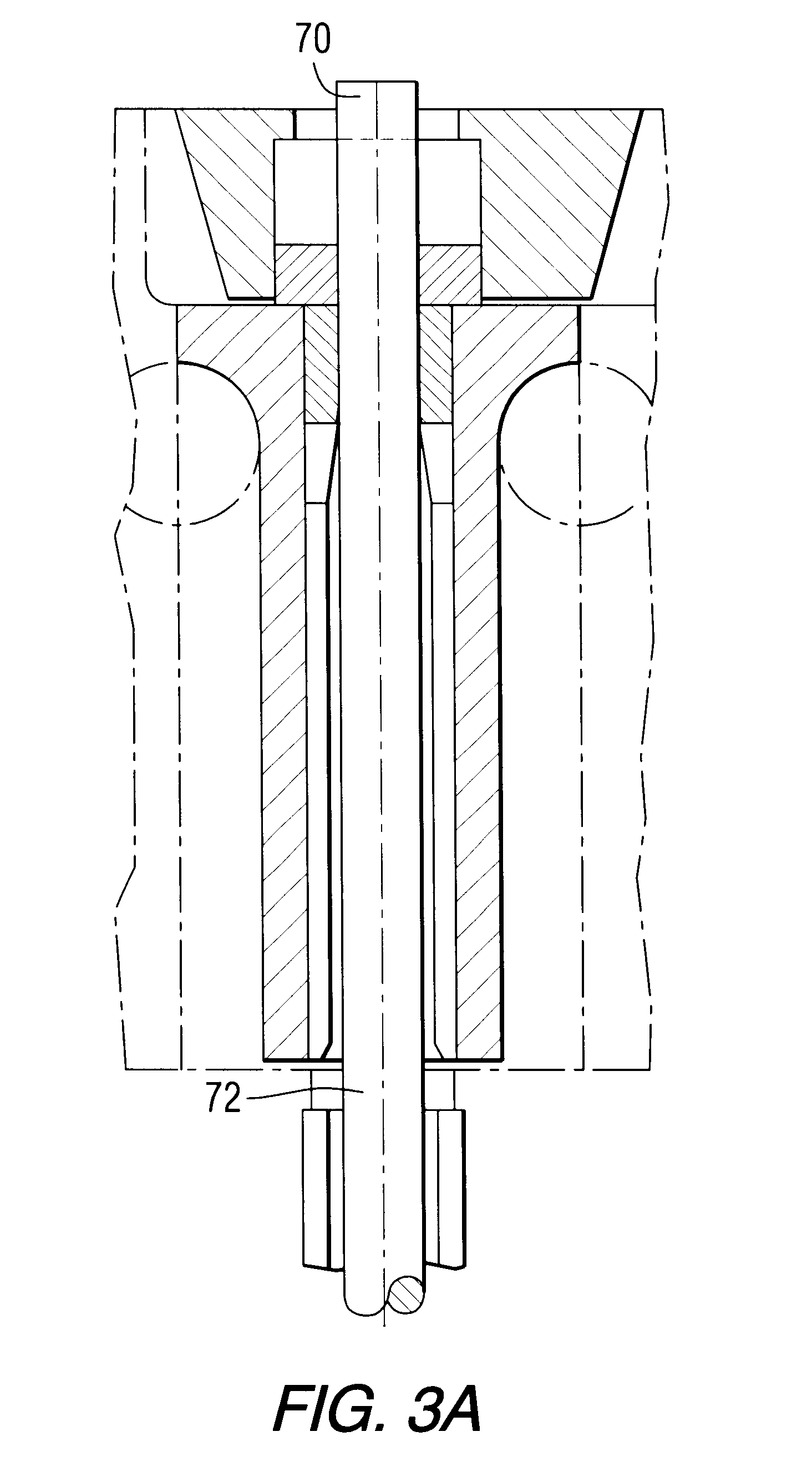Tool for removing damaged fasteners and method for making such tool
a technology for fasteners and tools, applied in the field of tools for removing threaded fasteners, can solve the problems of inability to manufacture tools in accordance with conventional manufacturing processes, damage to polygonal sides, and inability to meet the requirements of the application of the tool,
- Summary
- Abstract
- Description
- Claims
- Application Information
AI Technical Summary
Problems solved by technology
Method used
Image
Examples
Embodiment Construction
As shown in FIGS. 1 and 2, the presently disclosed tool 10 is used for the removal of nuts and other threaded fasteners from their corresponding bolts or equivalent threaded members. In particular, tool 10 is useful in the removal of threaded fasteners that have been damaged or corroded such that the outer surface of the fastener has been damaged and the fastener cannot be readily removed by wrenches, sockets or other tools that are designed for the removal of fasteners that are in good condition.
Tool 10 includes a first end 12 and a second end 14 that are aligned on a longitudinal center axis 15. First end 12 is in the general shape of a planar ring 16 that has a square inner edge 18 and a hexagonal outer edge 20. Second end 14 is in the general shape of a planar ring 21 that has a generally hexagonal inner edge 22 that includes hexagonal sides 23. Second end 14 further includes a circular outer edge 24. While inner edge 22 is hexagonal in the example of the preferred embodiment, i...
PUM
 Login to View More
Login to View More Abstract
Description
Claims
Application Information
 Login to View More
Login to View More - R&D
- Intellectual Property
- Life Sciences
- Materials
- Tech Scout
- Unparalleled Data Quality
- Higher Quality Content
- 60% Fewer Hallucinations
Browse by: Latest US Patents, China's latest patents, Technical Efficacy Thesaurus, Application Domain, Technology Topic, Popular Technical Reports.
© 2025 PatSnap. All rights reserved.Legal|Privacy policy|Modern Slavery Act Transparency Statement|Sitemap|About US| Contact US: help@patsnap.com



